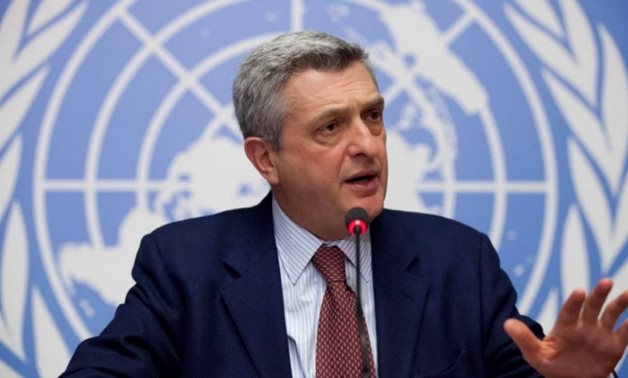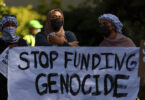Kerry Boyd Anderson
Last week, UN High Commissioner for Refugees Filippo Grandi visited Egypt to speak with the country’s leaders and refugees fleeing Sudan. As the fighting in Sudan continues, refugees are pouring across the country’s borders, seeking refuge in neighboring states. However, many of those states already host other refugees and struggle to cope with their own political and economic crises.
Since the current conflict broke out in Khartoum on April 15, quickly spreading to other parts of Sudan, nearly 1.4 million people have been displaced, the UN reported on May 28. Most of those are displaced within the country. However, nearly 380,000 people have fled across Sudan’s borders since April 15, according to a UN statement from June 2. Egypt has received the most refugees, at least 170,000. Last week, the UN said that more than 100,000 people have fled Sudan into Chad. On May 28, the UN reported that South Sudan had received about 71,000 refugees, the Central African Republic about 9,700 and Ethiopia about 5,000; however, those numbers have likely increased in the last week.
These numbers only represent refugees fleeing Sudan since the current conflict began in April. Most of the host countries already have pre-existing communities of Sudanese refugees from previous conflicts. Furthermore, Sudan itself is host to refugees from countries such as Ethiopia, Eritrea, South Sudan and the Central African Republic. Some of those fleeing Sudan now were refugees in Sudan from other conflicts; for example, some of those crossing the border into South Sudan had previously fled the South Sudanese civil war and sought refuge in Sudan.
The refugees’ experiences vary depending on which country they go to, where and how they lived in Sudan and when they fled. For example, fleeing a city such as Khartoum and traveling to the border with Egypt requires significant funds. In many cases, the poorest Sudanese lack the resources to flee the country. However, some other people are able to flee on foot, such as those in Darfur who live near the border with Chad. Most of the refugees – even those who had resources to get to the border – often arrive with little or nothing. Media reports, for example, have noted that some of those fleeing to Egypt have resources but are unable to access funds in bank accounts or assets left in Sudan.
Most of the refugees face dire circumstances. Some lost loved ones in the recent conflict or suffered abuse and terror. They often reach the border exhausted, hungry, dehydrated and traumatized. So far, most neighboring countries are allowing many refugees to cross. However, not all are able to cross the border; for example, many families were separated when Egypt allowed women and children to cross but demanded visas for boys and men aged 16 to 49. At the border, some refugees faced long bureaucratic delays and occasionally abuse, but there also are reports of great generosity from the citizens of host countries and from Sudanese residing in those countries who stepped up to help.
The refugees face immediate housing problems. Many camps lack sufficient water and food. With the rainy season arriving soon, UN officials and aid workers are working to improve shelter. In some places, refugees remain close to the border, raising concerns that they are not yet safe and need to be moved further away.
The challenges of providing for hundreds of thousands of new refugees in various countries – with more likely on the way – come on top of pre-existing problems. Five of Sudan’s neighboring countries have experienced conflict in recent years and are still struggling with the aftermath and continuing instability. More than 2.3 million South Sudanese are refugees in other countries, including Sudan; it is the largest refugee crisis in Africa. Ethiopia already hosts 924,000 refugees and asylum-seekers; the country also has 3.5 million internally displaced people and has generated its own refugee populations, including some in Sudan. Chad was hosting more than 580,000 refugees from Sudan and other neighboring countries before the latest influx. More than one-third of the Central African Republic’s population is displaced, leaving the country ill-equipped to host those fleeing Sudan. Chad and the Central African Republic are two of the world’s poorest countries. Egypt perhaps is the best placed neighbor to absorb Sudanese refugees, but it already hosted more than 291,000 refugees before April and is struggling to manage its own economic crisis.
The latest Sudanese refugee crisis highlights the problem of durable conflicts, chronic instability and ongoing refugee cycles. While the UN, other aid groups and several donor nations are trying to help, donor fatigue is likely to be more intense when future refugee flows seem inevitable in the same region. In the Sahel, instability can easily spread to other fragile countries. Furthermore, even if a political solution ends a particular conflict, displaced people face an uphill battle to recovery; those challenges increase for people who are displaced repeatedly. Without basic resources and stability, moving beyond survival to development can be nearly impossible. Sudan and the broader Sahel region desperately need peace. As long as conflict persists, economic opportunities will be elusive and many refugees will be unable to regain self-sufficiency. Humanitarian assistance is desperately needed to meet the basic needs of these vulnerable populations in the short term, and the international community must help. In the long term, without peace, the world should expect more refugee flows between these fragile states.







